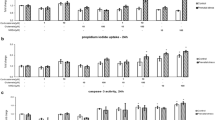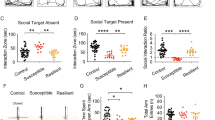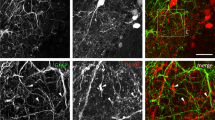Abstract
In addition to the classic genomic effects, increasing evidence suggests that GC can generate multiple rapid effects on many tissues and cells through nongenomic pathway. In the present study, the effects of corticosterone (CORT) on the intracellular calcium concentration ([Ca2+]i) in cultured dorsal spinal cord astrocytes were detected with confocal laser scanning microscopy using fluo-4/AM as a calcium fluorescent indicator that could monitor real-time alterations of [Ca2+]i. CORT (0.01–10 μM) caused a rapid increase in [Ca2+]i with a dose-dependent manner in cultured dorsal spinal cord astrocytes. The action of CORT on astrocytic [Ca2+]i was blocked by pertussis toxin (a blocker of G protein activation, 100 ng/ml), but was unaffected by RU38486 (glucocorticoid receptor antagonist, 10 μM). In addition, cycloheximide (protein-synthesis inhibitor, 10 μg/ml) pretreatment could not impair the CORT-evoked [Ca2+]i elevation. Furthermore, Ca2+ mobilization induced by CORT was abolished by chelerythrine chloride (protein kinase C inhibitor, 10 μM), but was not impaired by H89 (protein kinase A inhibitor, 10 μM). These observations suggest that a nongenomic pathways might be involved in the effect of CORT on [Ca2+]i in cultured dorsal spinal cord astrocytes. In addition, our results also raise a possibility that a putative pertussis toxin-sensitive mGCR (G-protein-coupled membrane-bound glucocorticoid receptor) and the downstream activation of protein kinase C may be responsible for CORT-induced Ca2+ mobilization in cultured dorsal spinal cord astrocytes.




Similar content being viewed by others
References
Fuxe K, Härfstrand A, Agnati LF, Yu ZY, Cintra A, Wikström AC, Okret S, Cantoni E, Gustafsson JA (1985) Immunocytochemical studies on the localization of glucocorticoid receptor immunoreactive nerve cells in the lower brain stem and spinal cord of the male rat using a monoclonal antibody against rat liver glucocorticoid receptor. Neurosci Lett 60:1–6
Ahima RS, Harlan RE (1990) Charting of type II glucocorticoid receptor-like immunoreactivity in the rat central nervous system. Neuroscience 39:579–604
Yan P, Xu J, Li Q, Chen S, Kim GM, Hsu CY, Xu XM (1999) Glucocorticoid receptor expression in the spinal cord after traumatic injury in adult rats. J Neurosci 19:9355–9363
Wang S, Lim G, Zeng Q, Sung B, Ai Y, Guo G, Yang L, Mao J (2004) Expression of central glucocorticoid receptors after peripheral nerve injury contributes to neuropathic pain behaviors in rats. J Neurosci 24:8595–8605
Wang S, Lim G, Zeng Q, Sung B, Yang L, Mao J (2005) Central glucocorticoid receptors modulate the expression and function of spinal NMDA receptors after peripheral nerve injury. J Neurosci 25:488–495
Wang S, Lim G, Mao J, Sung B, Yang L, Mao J (2007) Central glucocorticoid receptors regulate the upregulation of spinal cannabinoid-1 receptors after peripheral nerve injury in rats. Pain 131:96–105
Jackson MJ, Zielke HR, Max SR (1995) Effect of dibutyryl cyclic AMP and dexamethasone on glutamine synthetase gene expression in rat astrocytes in culture. Neurochem Res 20:201–207
Crossin KL, Tai MH, Krushel LA, Mauro VP, Edelman GM (1997) Glucocorticoid receptor pathways are involved in the inhibition of astrocyte proliferation. Proc Natl Acad Sci USA 94:2687–2692
Liu Y, Imai H, Sadamatsu M, Tsunashima K, Kato N (2005) Cytokines participate in neuronal death induced by trimethyltin in the rat hippocampus via type II glucocorticoid receptors. Neurosci Res 51:319–327
Hald A, Nedergaard S, Hansen RR, Ding M, Heegaard AM (2009) Differential activation of spinal cord glial cells in murine models of neuropathic and cancer pain. Eur J Pain 13:138–145
Wang W, Wang Y, Huang J et al (2008) Temporal changes of astrocyte activation and glutamate transporter-1 expression in the spinal cord after spinal nerve ligation-induced neuropathic pain. Anat Rec (Hoboken) 291:513–518
Lo ¨sel R, Wehling M (2003) Nongenomic actions of steroid hormones. Nat Rev Mol Cell Biol 4:46–56
Liu L, Wang C, Ni X, Sun J (2007) A rapid inhibition of NMDA receptor current by corticosterone in cultured hippocampal neurons. Neurosci Lett 420:245–250
Yukawa H, Shen J, Harada N, Cho-Tamaoka H, Yamashita T (2005) Acute effects of glucocorticoids on ATP-induced Ca2+ mobilization and nitric oxide production in cochlear spiral ganglion neurons. Neuroscience 130:485–496
Liu XH, Zeng JW, Zhao YD, Xiao Z, Fang Cq, Ruan HZ (2010) Inhibition of ATP-induced Ca2+ influx by corticosterone in dorsal root ganglion neurons. Neurochem Res 35:804–810
Simard M, Couldwell WT, Zhang W, Song H, Liu S, Cotrina ML, Goldman S, Nedergaard M (1999) Glucocorticoids-potent modulators of astrocytic calcium signaling. Glia 28:1–12
Salter MW, Hicks JL (1994) ATP-evoked increases in intracellular calcium in neurons and glia from the dorsal spinal cord. J Neurosci 14:1563–1575
Peterson ER, Crain SM (1982) Nerve growth factor attenuates neuro-toxic effects of taxol on spinal cord-ganglion explants from fetal mice. Science 217:377–379
McDonough SI, Cseresnyés Z, Schneider MF (2000) Origin sites of calcium release and calcium oscillations in frog sympathetic neurons. J Neurosci 20:9059–9070
Gee KR, Brown KA, Chen WN, Bishop-Stewart J, Gray D, Johnson I (2000) Chemical and physiological characterization of fluo-4 Ca2+-indicator dyes. Cell Calcium 27:97–106
Han JZ, Lin W, Chen YZ (2005) Inhibition of ATP-induced calcium influx in HT4 cells by glucocorticoids: involvement of protein kinase A. Acta Pharmacol Sin 26:199–204
He LM, Zhang CG, Zhou Z, Xu T (2003) Rapid inhibitory effects of corticosterone on calcium influx in rat dorsal root ganglion neurons. Neuroscience 116:325–333
Qiu J, Wang CG, Huang XY, Chen YZ (2003) Nongenomic mechanism of glucocorticoid inhibition of bradykinin-induced calcium influx in PC12 cells: possible involvement of protein kinase C. Life Sci 72:2533–2542
Swanson RA, Ying W, Kauppinen TM (2004) Astrocyte influences on ischemic neuronal death. Curr Mol Med 4:193–205
Carmignoto G, Fellin T (2006) Glutamate release from astrocytes as a non-synaptic mechanism for neuronal synchronization in the hippocampus. J Physiol Paris 99:98–102
Ni Y, Malarkey EB, Parpura V (2007) Vesicular release of glutamate mediates bidirectional signaling between astrocytes and neurons. J Neurochem 103:1273–1284
Zeng JW, Liu XH, Zhang JH, Wu XG, Ruan HZ (2008) P2Y1 receptor-mediated glutamate release from cultured dorsal spinal cord astrocytes. J Neurochem 106:2106–2118
Yang Y, Ge W, Chen Y, Zhang Z, Shen W, Wu C, Poo M, Duan S (2003) Contribution of astrocytes to hippocampal long-term potentiation through release of d-serine. Proc Natl Acad Sci USA 100:15194–15199
Koizumi S, Fujishita K, Tsuda M, Shigemoto-Mogami Y, Inoue K (2003) Dynamic inhibition of excitatory synaptic transmission by astrocyte-derived ATP in hippocampal cultures. Proc Natl Acad Sci USA 100:11023–11028
Zeng JW, Liu XH, Zhao YD, Xiao Z, He WJ, Hu ZA, Ruan HZ (2009) Role of P2Y1 receptor in astroglia-to-neuron signaling at dorsal spinal cord. J Neurosci Res 87:2667–2676
Etgen AM, Martin M, Gilbert R, Lynch G (1980) Characterization of corticosterone-induced protein synthesis in hippocampal slices. J Neurochem 35:598–602
Morsink MC, Joe ¨ls M, Sarabdjitsingh RA, Meijer OC, De Kloet ER, Datson NA (2006) The dynamic pattern of glucocorticoid receptor-mediated transcriptional responses in neuronal PC12 cells. J Neurochem 99:1282–1298
Stahn C, Lo ¨wenberg M, Hommes DW, Buttgereit F (2007) Molecular mechanisms of glucocorticoid action and selective glucocorticoid receptor agonists. Mol Cell Endocrinol 275:71–78
Gagne D, Pons M, Philibert D (1985) RU38486: a potent antiglucocorticoid in vitro and in vivo. J Steroid Biochem 23:247–251
Vesce S, Rossi D, Brambilla L, Volterra A (2007) Glutamate release from astrocytes in physiological conditions and in neuro-degenerative disorders characterized by neuroinflammation. Int Rev Neurobiol 82:57–71
Acknowledgments
This work is supported by the National Natural Science Foundation of China (No.30960126 and 31000497). We are very grateful to the other staff of Department of Physiology. We also thank Guo Luo and Jing-yu Xu (Central Laboratory, Zunyi Medical College) for their technique assistance in laser scanning confocal microscopy.
Author information
Authors and Affiliations
Corresponding author
Additional information
Junwei Zeng and Min Li contributed equally to this study.
Rights and permissions
About this article
Cite this article
Zeng, J., Li, M., Xiao, Z. et al. Rapid Elevation of Calcium Concentration in Cultured Dorsal Spinal Cord Astrocytes by Corticosterone. Neurochem Res 38, 382–388 (2013). https://doi.org/10.1007/s11064-012-0929-4
Received:
Revised:
Accepted:
Published:
Issue Date:
DOI: https://doi.org/10.1007/s11064-012-0929-4




